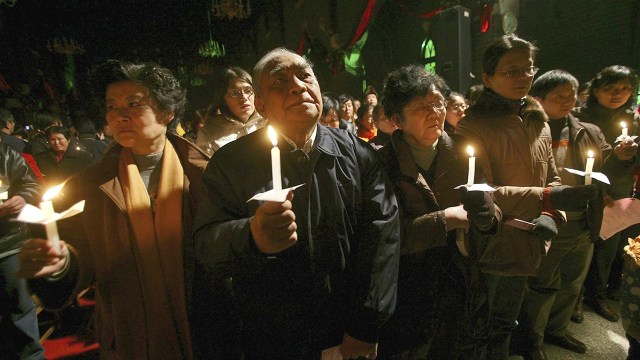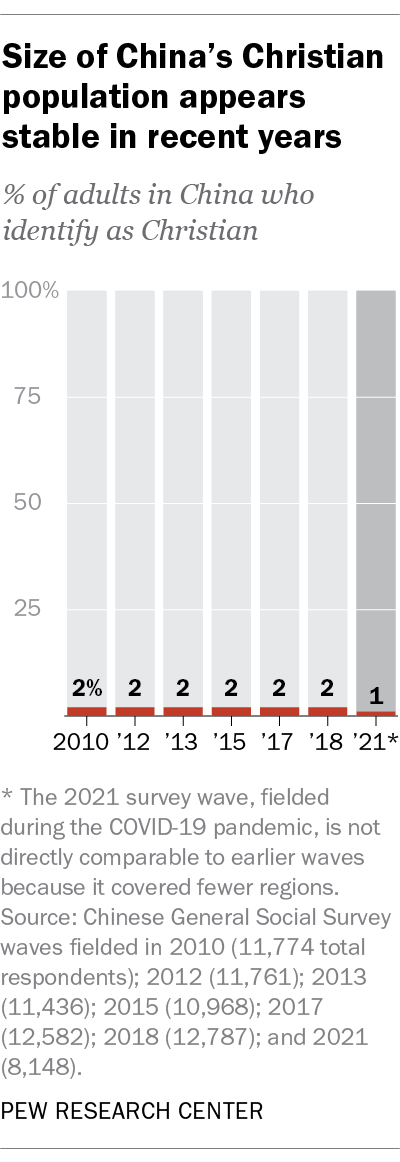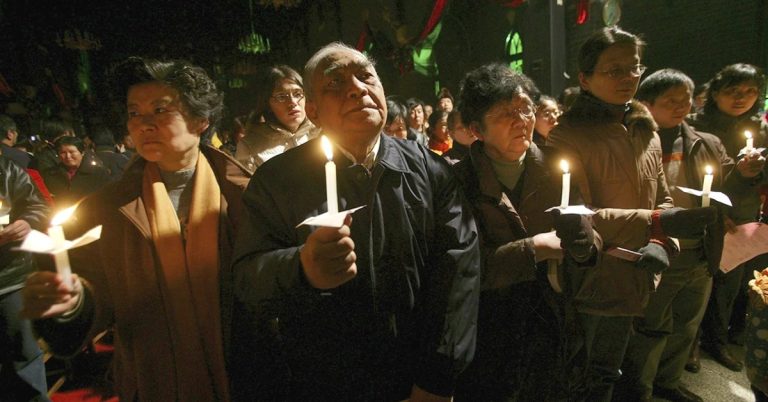
The Chinese government banned religion during the Cultural revolution And although Christianity and other religions rebounded in the 1980s and 1990s as restrictions were lifted, the size of China’s Christian population now appears to have stabilized, according to a Pew Research analysis. Center for the latest available survey data collected by academic organizations in China. China.
This analysis of China’s Christian population is based on the August 2023 Pew Research Center report. Measuring religion in China. Since the Center, like other non-Chinese organizations, is not authorized to conduct surveys in China, this article draws on data collected between 2010 and 2021 in the Chinese General Social Survey (CGSS), a nationally representative survey conducted by the National Survey Research Center of Renmin University of China. Most CGSS waves have around 12,000 respondents. Other surveys conducted by academic organizations in China yield similar results on the size of the Christian population in China. The report chapter on Christianity has more details.
This article also discusses Chinese government data on religion, which is mainly published by China’s State Council and the National Administration of Religious Affairs – formerly known as the State Administration for Religious Affairs – and data from state-run religious associations, such as the National Administration of Religious Affairs. China Christian Council and Three-Self Patriotic Movement (CCC and TSPM).
This research falls within the framework Pew-Templeton Project on the Global Religious Futurewhich analyzes religious change and its impact on societies around the world.
No survey has assessed China’s religious landscape in the years immediately following the Cultural Revolution, but government figures suggest that the number of Christians practicing in registered churches in China more than doubled from 6 million in 1982 to 14 million in 1997. the country’s overall population grew by a more modest rate of 22% during this period.
There have also been reports of an increase in the number of Christians practicing in “underground” or “house” churches, which are not registered with state-sanctioned Catholic and Protestant associations (the Catholic Patriotic Association and the Patriotic Movement of Three-Autonomies).
Some journalists, academics, and Christian advocacy groups have suggested that Christianity in China continues to grow rapidly in the 21st century and Christians are on track to make up the majority of the population by 2050.

But data from the Chinese General Social Survey (CGSS) does not show continued growth. Between 2010 and 2018, the share of Chinese adults formally identifying with Christianity remained stable at around 2%, according to the CGSS. In China, around nine out of ten Christians are Protestant.
Some researchers have suggested that corona virus pandemic guest increased religiosity in China. But the latest wave of the CGSS – carried out in 2021, in the middle of a pandemic – does not suggest any sign of a renewal of Christian identity. Only 1% of respondents formally identified with Christianity that year.
It is important to note that the 2021 survey data is not directly comparable to previous waves, as COVID-19 outbreaks in parts of China have made it impossible to obtain the same coverage as in pre-waves. -pandemics.
Estimates based on surveys of China’s Christian population may be conservative
In China, religious identity can be measured using data points from many surveys. But religious identity alone can be a conservative measure of religion’s influence in China.
More and more Chinese adults are sharing a few Christian beliefs identify with faith in surveys. In the 2018 China Family Panel Studies survey, for example, 3% of respondents reported believing exclusively in the Christian God (the survey measured belief in Jesus Christ and Tianzhu, the Chinese word for God used by Catholics ). Another 4% said they believed in the Christian God And at least one other non-Christian deity.
More generally, all Estimates based on surveys of China’s Christian population may be conservative. Some people may choose not to reveal their Christian identity because they fear negative social or financial consequences if their identity were revealed, especially if they belong to an unregistered church.
Christianity in China was confronted increased restrictions since Xi Jinping became president in 2013. We cannot know for sure how survey patterns are affected by political circumstances. Hypothetically, there could be a real increase in the proportion of Chinese adults identifying with Christianity, which is not captured in survey measures. This could be the case if respondents are increasingly reluctant to reveal their Christian identity due to the increased government surveillance of religious activity.
Why China’s Christian population may be stabilizing
While we cannot be sure how accurately the surveys capture the reality of China’s religious landscape, there are several reasons why it is plausible that the country’s Christian population is plateauing.
Government policies that monitor and discourage religious activity may have prevented some Chinese from becoming or remaining Christians. A official ban on education and religious activities for children, for example, can inhibit the transmission of Christian identity to the next generation. Demographics also pose an obstacle to Christian growth in China. The CGSS indicates that Christians are concentrated among the elderly and relatively rare among young Chinese.
Among remaining Christians, the recent government program of absorb previously unregistered churches into the official system may have removed a reason why people conceal their Christian identity.
Other estimates of the number of Christians in China vary widely
The Chinese government has occasionally published statistics estimating how many people associate themselves with Christianity and other religions. However, it is often unclear how these estimates were calculated and whether they are comparable to previous government figures. Government statistics also vary in the extent to which they include members of unregistered churches, and it is often unclear whether or not they include children.
In 2010, the Blue Book on Religion of the Chinese Academy of Social Sciences (CASS) estimated that there were 23 million Protestants in China. This government estimate, based for the first time on a nationally representative household survey, included members of the officially state-sanctioned Three-Self Patriotic Movement as well as members of house churches.
When this estimate was contested by Christian leaders, members of CASS Duan Qi And Huang Haibo replied that the survey showed that the number of Protestants was at least 23 million, but that due to possible under-reporting the total number could be as high as 40 million. The next edition of the Blue Book, in 2011, indicated that the Protestant population was between 23 and 40 million (2 to 3 percent of China’s population of all ages).
In 2018, the State Council of the People’s Republic of China’s White Paper on Religious Freedom said there were 38 million Protestants, but the paper did not detail how this estimate was arrived at. At that time, a Peking University study estimated that the total number of adults who formally identified as Christians, professed Christian beliefs, or regularly attended Christian worship services, including Protestants and Catholics, was of around 40 million, based on one study. analysis of survey measures China Family Panel Studies.
Several Christian organizations claim that the number of Christians in China continues to rise steadily and is much higher. higher than survey data or government statistics indicate. For example, the Center for the Study of World Christianity estimates that the Christian share of China’s adult and child population increased from 6% in 2000 to 7% in 2020. And Asian Harvesta Christian ministry that works to increase the number of churches in Asia, estimates that Christians have increased from 8% of the country’s total population in 2010 to 9% in 2020.
Related: 8 key findings about Christians in India And How many Christians are there in Egypt?



